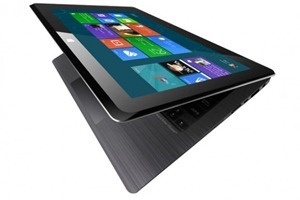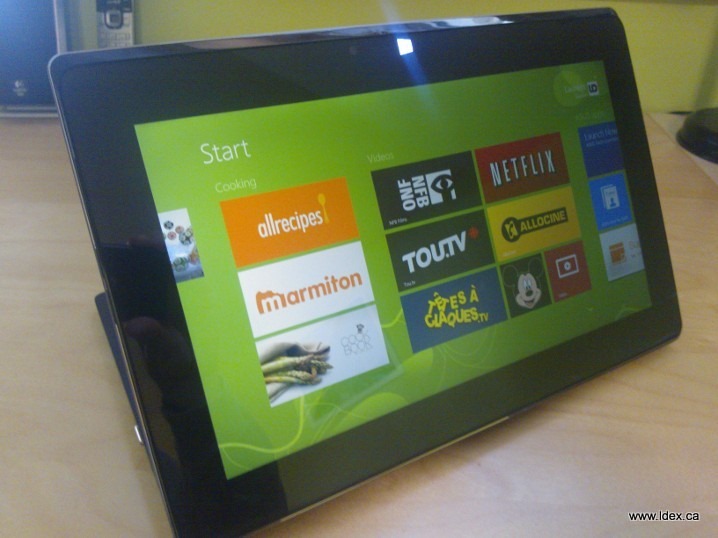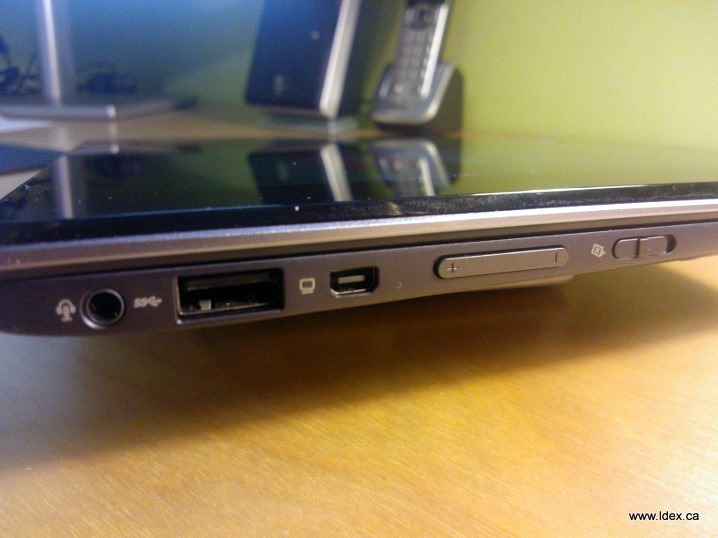Asus Taichi review (Windows 8 convertible device)
 The Asus Taichi 21 is a convertible Windows 8 tablet with dual 11.6-inch screen. Here is my quick unprofessional review with it.
The Asus Taichi 21 is a convertible Windows 8 tablet with dual 11.6-inch screen. Here is my quick unprofessional review with it.
Hardware & equipment
The model I have has a Core i7 processor, built in 256GB SSD drive, dual front cameras and 4GB of RAM. So it offers strong performance, maybe except for the graphics, via an integrated Intel HD Graphics 4000, but this isn’t a gaming machine anyway, right ?
Ports on the sides:
- Two USB 3.0
- Micro HDMI
- Mini VGA
- Headphone jack
- Volume controls
- Switch for swapping screen modes
Audio provided by Bang & Olufsen ICEpower, the same I already enjoy on my Asus Zenbook Prime, is amazing, nothing to do with the anemic audio coming out of an iPad.
I like how Asus pay attention to packaging, and it comes full of accessories too: Network adapter, Micro HDMI adapter, nice sleeve, pressure-sensitive stylus.
Dual displays
So this is the originality of this device. It offers 2 nice screens to play with, offering a resolution of 1920x1080px each.
- Inside screen (laptop mode) non touch
- Outside screen (tablet mode) touch
Close the lid and Windows auto switch to the touch screen, open it and it goes back to desktop mode (inside screen). Beware it can takes up to 3 seconds to switch between screens, so don’t be impatient… things could be improved here.
The device also has a dedicated key to change between 4 display modes:
- Notebook (inside screen only)
- Tablet (outside screen only)
- Mirror (Both screen duplicated)
- Dual (Both screens independent).
Dual screen mode is interesting to share a presentation in a small meeting or class for instructors. Theoretically someone else could use your touch screen while you present on the laptop, two persons using the same device, but I doubt it will be a common use case.
Battery Life
Well, unfortunately the battery life is really poor, you won’t go very far without a power cord, I barely got 3 hours of normal use (and I just used one screen at a time).
This kind of device will suffer badly from competitive products.
No way to compete with a Surface of an iPad here. If you make a mobile device you need 7 hours of battery or you fail at this job, period.
My experience with the device
First note: it doesn't go to sleep when you close the lid, it switch to the outside display. So you have to turn it off using the power slider every time. The “Close and go” habit don’t work here…
I am the kind of guy that don’t care having a touch screen on a laptop. I am much more efficient with keyboard/mouse on “desktop mode”. Touch is for tablet. But Windows 8 is a “dual head” (desktop/tablet) OS and this device takes advantage of this nature. One screen+keyboard for desktop mode, one touch screen for tablet mode, all on the same device! I think this is the value proposition and strong differentiator of Windows 8 compared to the iPad, so I really like to see more device offering the best experience for Windows 8.
Even at just 11” I find the Taichi to be heavy for a tablet, you cannot really hold it in one hand.
Conclusion
Does it make a good laptop? No.
Does it make a good tablet? No.
But it makes a pretty good convertible.
Know what you need.
For now I will stick to my Ultrabook+tablet combo, but I really like the way constructors are exploring new paths.





